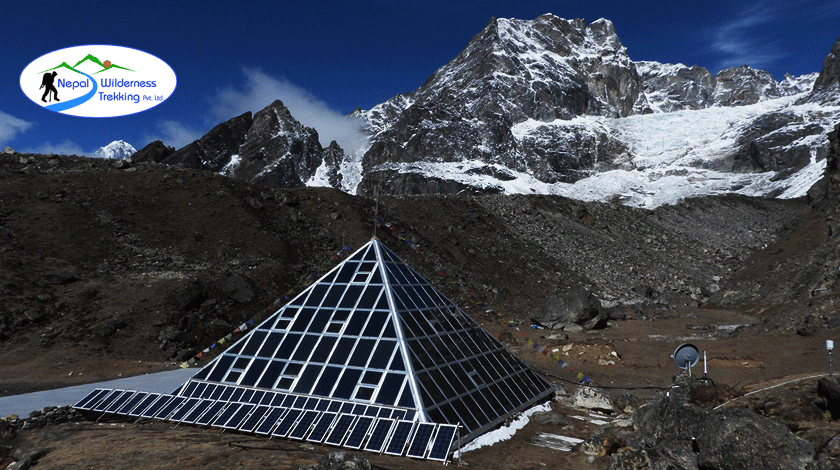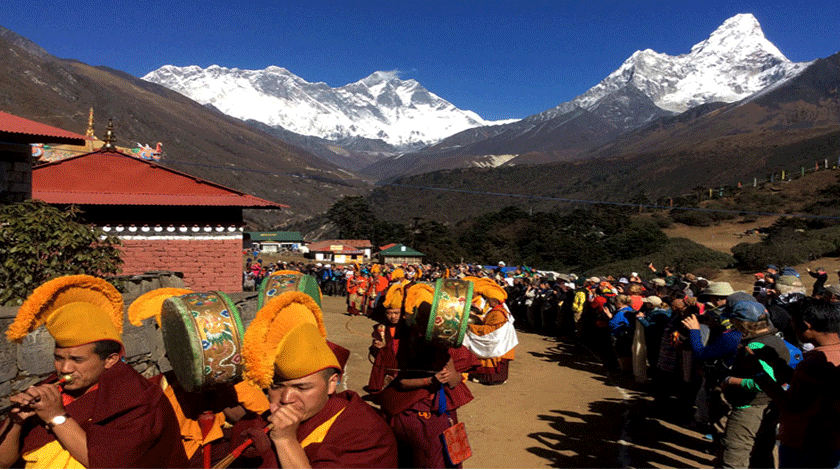Everest Pyramid

The Everest Pyramid: A Beacon of High-Altitude Science
The Everest Pyramid, officially called the Pyramid International Laboratory/Observatory, is an architectural and scientific marvel in Nepal’s Sagarmatha region. Located at 5,050 meters above sea level, near Lobuche in Khumbu Valley, this unique structure is vital for high-altitude research and environmental science. It blends sustainable engineering, advanced technology, and international collaboration. The Everest Pyramid stands as a symbol of humanity’s dedication to studying the Himalayan ecosystem’s challenges and wonders.
History and Purpose of Everest Pyramid
The Everest Pyramid was established in 1990 through a collaboration between the Italian National Research Council (CNR) and Nepal’s government. The facility’s primary goal is to support scientific research at high altitudes. It focuses on studies related to climate change, glaciology, human physiology, meteorology, geology, and more. Its location, near the base of Mount Everest, provides an ideal environment for studying changes in extreme conditions.
Architectural Design and Features
The Everest Pyramid’s design is as functional as it is striking. The structure is a three-sided pyramid constructed with durable and sustainable materials, emphasizing energy efficiency and environmental harmony. Solar panels installed on the Pyramid’s surface generate most of its power requirements, making it largely energy-independent. The shape of the building helps minimize wind resistance and prevents excessive snow accumulation, key considerations at such high altitudes.
The interior of the Pyramid houses laboratories, workspaces, and living quarters for researchers. Facilities include state-of-the-art equipment tailored for scientific experiments, a computer network for data collection and dissemination, and a library for research purposes. Additionally, there is a weather station on-site that monitors atmospheric changes and collects critical meteorological data. Despite its remote location, the Pyramid boasts a well-thought-out logistical setup to sustain research activities and accommodate scientists from all over the world.
Trekkers’ Accommodation
In addition to its role as a research facility, the Everest Pyramid serves as an overnight stop for trekkers undertaking the Everest Base Camp trek or the challenging Three Passes Trek. The facility provides a warm and safe refuge for travelers, offering an opportunity to rest and acclimatize to the high-altitude environment. Visitors can also learn about the ongoing scientific work at the Pyramid and gain a deeper appreciation for the efforts to preserve the Himalayan ecosystem.
Research Contributions of Everest Pyramid
1. Climate Change and Environmental Studies
One of the primary focuses of research conducted at the Pyramid is the study of climate change and its impact on Himalayan glaciers and ecosystems. Scientists monitor temperature variations, precipitation patterns, and glacier movements to understand the better implications of global warming. Studies conducted here contribute valuable insights into how these changes affect water resources downstream, impacting millions who rely on the rivers fed by Himalayan glaciers.
2. Human Physiology
The high-altitude environment near the Pyramid acts as a natural laboratory. It allows research into the effects of low oxygen, cold temperatures, and reduced atmospheric pressure on the human body. Studies on hypoxia, acclimatization, and conditions like Acute Mountain Sickness (AMS) help improve the health and safety of climbers and residents in high-altitude areas.
3. Glaciology
Glaciological studies at the Pyramid explore ice core samples, glacier mass balance, and the dynamics of ice flow. Such research offers insights into past climate patterns and aids in predicting future changes, contributing to global efforts in climate modeling and sustainable resource management.
4. Meteorology and Atmospheric Sciences
The Pyramid’s strategic placement allows meteorologists to monitor atmospheric composition and changes over time. Measurements of air quality, including levels of carbon dioxide, black carbon, and other pollutants, have helped researchers understand how human activities affect even the most remote regions of the Earth.
5. Geology
Geological studies in the area focus on tectonic activity and the processes shaping the Himalayas. By analyzing rock formations, sediment layers, and seismic activity, researchers gain a deeper understanding of mountain formation and plate tectonics.
6. Biological and Ecological Studies
The biodiversity of the Everest region is another subject of interest. Studies of plant and animal life, including adaptations to extreme conditions, have expanded our understanding of ecology and resilience in fragile ecosystems.
Impact and Significance of Everest Pyramid
The Everest Pyramid has played a critical role in advancing scientific knowledge about high-altitude environments and their global implications. Research findings have been instrumental in international climate negotiations, such as those held under the framework of the United Nations Framework Convention on Climate Change (UNFCCC). The data collected also supports the sustainable development goals of Nepal, aiding in biodiversity conservation and natural resource management.
Additionally, the research conducted at the Pyramid has improved mountaineering safety. Insights into human physiological responses at high altitudes have directly informed practices for climbers and trekkers venturing into the Himalayas.
Challenges
Operating a research facility at such an extreme altitude comes with its challenges. The high-altitude conditions can pose health risks to researchers, making acclimatization periods essential. Additionally, the remote location necessitates efficient logistics for transporting equipment, food supplies, and other essentials.
Another challenge is maintaining the sustainability of operations without compromising the fragile Himalayan environment. The facility’s reliance on solar energy and waste management systems is a step toward mitigating environmental impacts.
Collaboration and Global Reach
The Pyramid has hosted scientists from numerous countries, fostering international collaboration in high-altitude research. This multidisciplinary approach enhances the global reach and applicability of the findings. Over the years, the facility has been the site of partnerships among universities, government agencies, and research institutions, creating a hub for knowledge sharing.
Notable projects include studies on black carbon’s impact on Himalayan snowmelt and collaborative efforts with NASA to monitor changes in Earth’s cryosphere. The Pyramid’s contributions underscore the importance of shared responsibility in addressing global challenges such as climate change.
Sustainable Practices
The Everest Pyramid is a model of sustainable development. Beyond its energy-efficient design, the facility uses innovative waste management techniques to minimize its ecological footprint. Organic waste is composted, and non-biodegradable materials are transported to appropriate recycling facilities. Efforts are also made to educate trekkers and climbers about responsible practices in the Himalayas, aligning tourism with conservation efforts.
Future Prospects
Looking ahead, the Everest Pyramid aims to expand its research scope by integrating advanced technologies such as remote sensing, artificial intelligence, and machine learning. These tools will enhance the analysis of complex datasets, enabling more precise predictions about environmental changes.
Another future direction is the promotion of educational initiatives. The Pyramid seeks to engage young scientists and students worldwide, providing opportunities to contribute to research and foster a new generation of environmental stewards. Such initiatives underscore the Pyramid’s dual role as both a scientific hub and an educational platform.
Visitor Experience
While primarily a research facility, the Everest Pyramid occasionally opens its doors to visitors. Trekkers and climbers passing through the Khumbu Valley may have the opportunity to learn about the ongoing scientific work and the importance of preserving the Himalayan environment. Guided tours and informational sessions provide insights into the critical research conducted and the challenges faced in operating at such high altitudes.
Cultural and Spiritual Context
The Everest region, known as Sagarmatha in Nepali and Chomolungma in Sherpa, holds deep cultural and spiritual significance. The presence of the Pyramid complements this heritage, blending modern scientific pursuits with respect for local traditions. The facility collaborates closely with the local Sherpa communities, ensuring that its activities align with the region’s cultural values and contribute positively to the local economy.
Conclusion
The Everest Pyramid stands as a beacon of human ingenuity and collaboration in one of the world’s most challenging environments. By facilitating groundbreaking research in a sustainable and culturally respectful manner, the Pyramid underscores the importance of balancing scientific exploration with environmental stewardship. As the impacts of climate change and other global challenges continue to unfold, the work conducted at this high-altitude laboratory will remain essential to understanding and addressing these pressing issues, making it an invaluable asset to the scientific community and the world at large.










